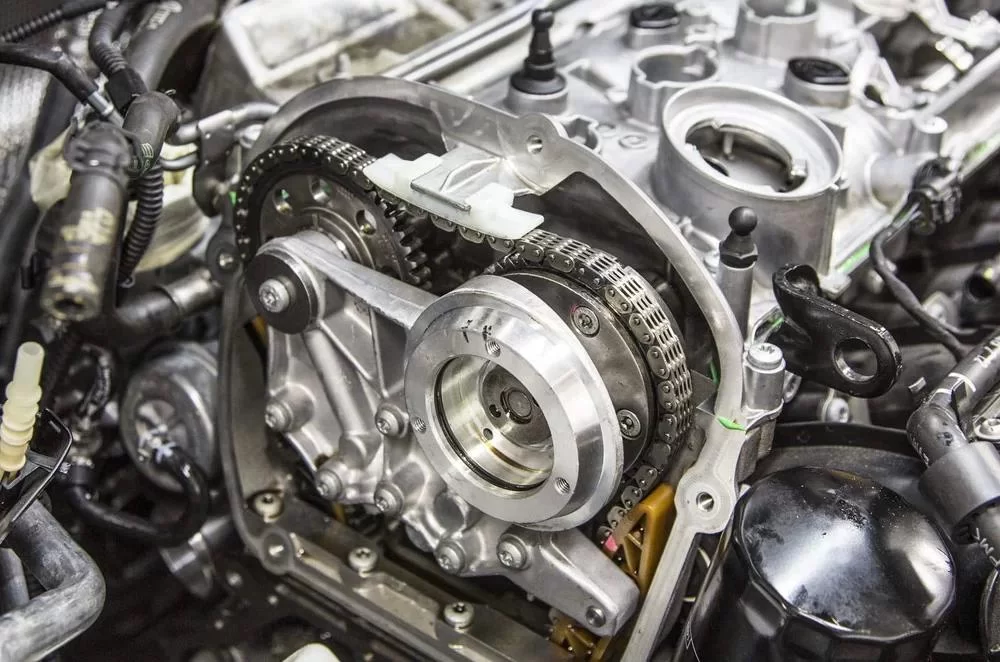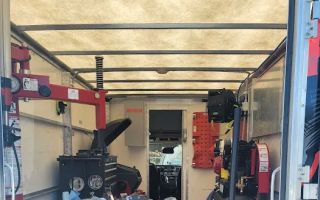- timing-chain-basics
- signs-of-timing-chain-failure
- how-to-replace-a-cars-timing-chain-step-by-step
- real-case-timing-chain-failure
- when-to-visit-professionals
1. Understanding the Timing Chain in Your Car
The timing chain is a critical component that synchronizes the rotation of the crankshaft and camshaft, ensuring that your engine’s valves open and close at the right times. Unlike a timing belt, the chain is made of metal and is generally more durable, often lasting over 100,000 miles. However, it's not invincible. Replacing a timing chain is a major task, but knowing how to replace a car's timing chain can save you from long-term engine damage and high repair costs.
Most modern engines are interference engines, meaning if the timing chain breaks, internal engine parts can collide and cause catastrophic damage. This is why early detection and timely replacement are essential for the longevity of your car.

Sam's Club Tire & Battery
3600 O'Neill Dr, Jackson, MI 49202, USA
2. Signs Your Timing Chain Might Be Failing
Before diving into the replacement process, it’s important to understand the common symptoms of a failing timing chain. These include:

Firestone Complete Auto Care
200 S California St, Ventura, CA 93001, USA
2.1. Rattling Noise from the Engine
If you hear a metallic rattling sound when starting your car or idling, it might be your timing chain struggling to stay in tension. This is often the first red flag.
2.2. Engine Misfires or Rough Idling
The chain might have stretched, causing timing issues that result in poor combustion and misfires. If your car runs rough or the check engine light comes on, it's worth checking the timing chain.
2.3. Metal Shavings in the Oil
This is a more advanced symptom. Worn-out timing chain components can break apart and mix into your oil. An oil change revealing metal particles is a strong warning sign.
If you notice any of these issues, it might be time to consider timing chain replacement. And if you’re unsure, visiting a trusted professional or checking with Rescue & Towing can help you get the right service or parts fast.
3. How to Replace a Car's Timing Chain: A Step-by-Step Guide
3.1. Prepare the Necessary Tools and Environment
Replacing a timing chain is not a casual DIY job. You’ll need a well-lit workspace, a complete socket set, torque wrenches, screwdrivers, jack stands, and a timing chain replacement kit. Always refer to your vehicle’s repair manual for exact specifications.
3.2. Disconnect the Battery and Drain Fluids
Start by disconnecting the battery to avoid electrical shorts. Then, drain the engine oil and coolant. These fluids can contaminate your workspace if left unchecked.
3.3. Remove Engine Components for Access
This step includes removing the serpentine belt, valve covers, timing cover, and potentially the water pump. Be organized—label bolts and parts to ensure a smooth reassembly process.
3.4. Align Timing Marks and Remove the Old Chain
Turn the crankshaft to align the timing marks. Then, remove the chain tensioner and guides. Once everything is loose, carefully take out the old chain.
3.5. Install the New Timing Chain
Position the new chain, aligning it precisely with the timing marks. Reinstall the chain guides and tensioner. Double-check your work—it’s critical that timing is perfect to avoid engine damage.
3.6. Reassemble and Test the Engine
Put all parts back in reverse order, refill the fluids, and reconnect the battery. Turn the engine over by hand first to ensure it’s turning freely. Then start the engine and listen for unusual noises.
Replacing the timing chain yourself can take 6 to 10 hours, depending on your experience. If that feels overwhelming, it’s perfectly reasonable to turn to professionals like Rescue & Towing for help or recommendations on local trusted garages.
4. Real Case: How Timing Chain Failure Left a Family Stranded
In 2023, a Michigan family was stranded during a road trip when their SUV suddenly lost power on the highway. The cause? A failed timing chain that snapped due to lack of maintenance. Not only did this ruin their vacation, but it also cost them over $3,000 in engine repairs because it caused internal damage.
This real-world example highlights why regular inspection and early replacement are so important. Timing chain failure is not just a mechanical issue—it can seriously disrupt lives.
5. When Should You Visit a Professional Instead?
If your car has complex timing systems, like variable valve timing (VVT), or if you lack the right tools or workspace, it’s wise to leave this job to a professional. Misalignment by just one tooth can result in complete engine failure.
At Rescue & Towing, you can find certified mechanics and high-quality parts tailored to your vehicle’s model and year. Whether you need a consultation, a product, or a full service, they offer reliable recommendations to get your vehicle safely back on the road.
Remember, when it comes to knowing how to replace a car's timing chain, understanding the process is just as important as recognizing when you need help. Your car—and your safety—depends on it.






























